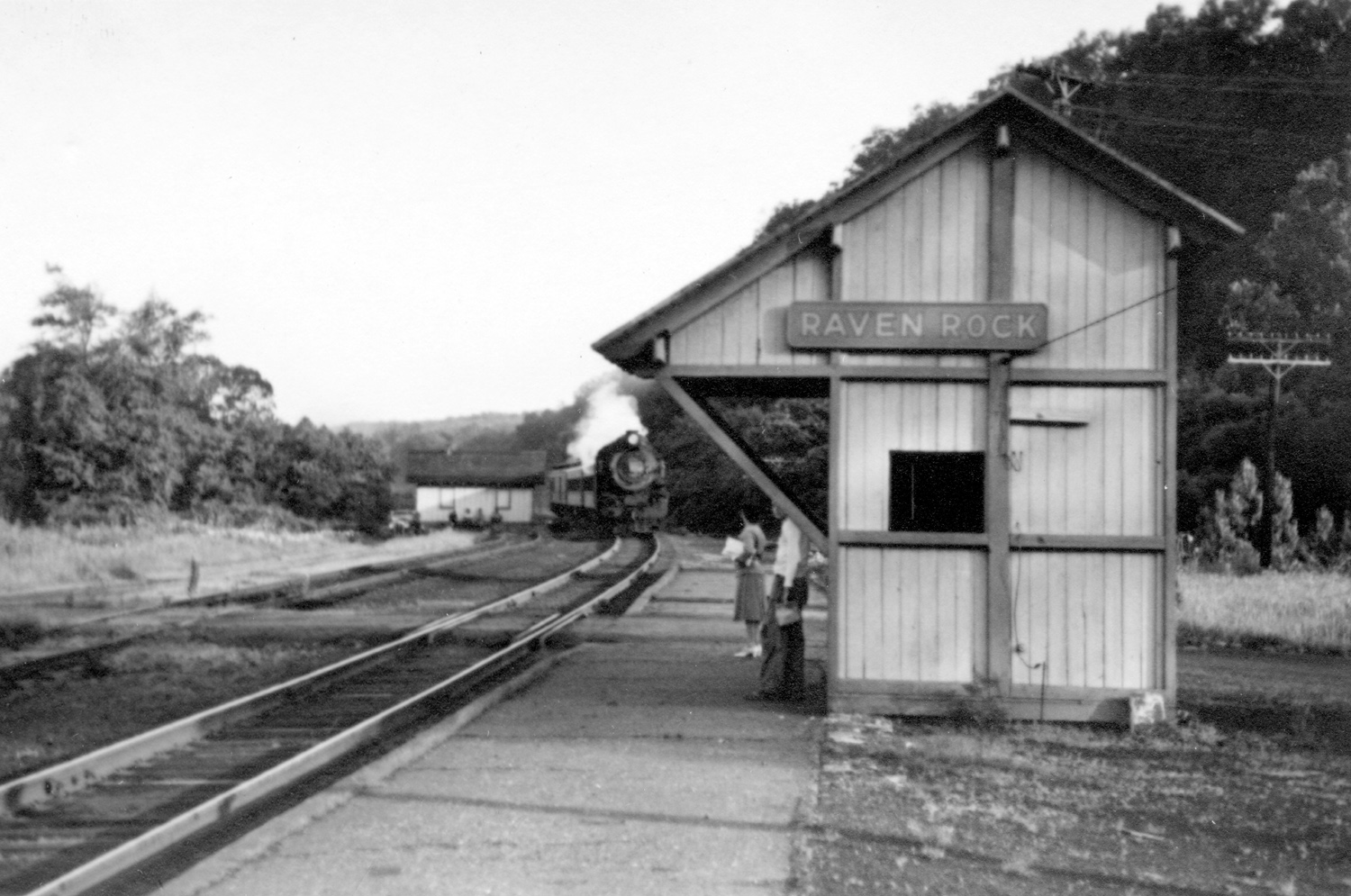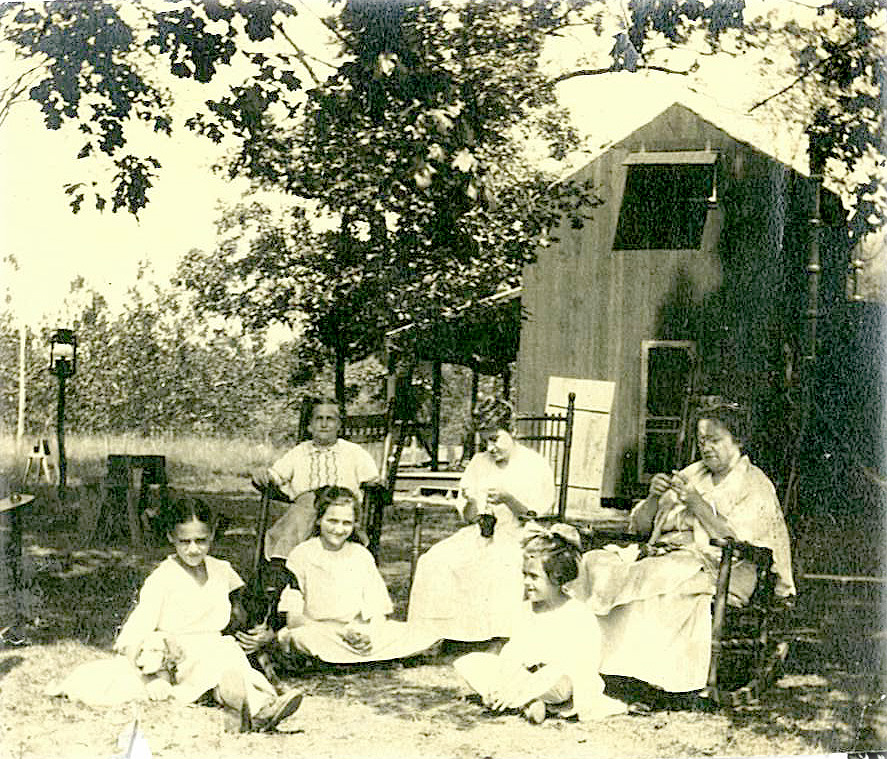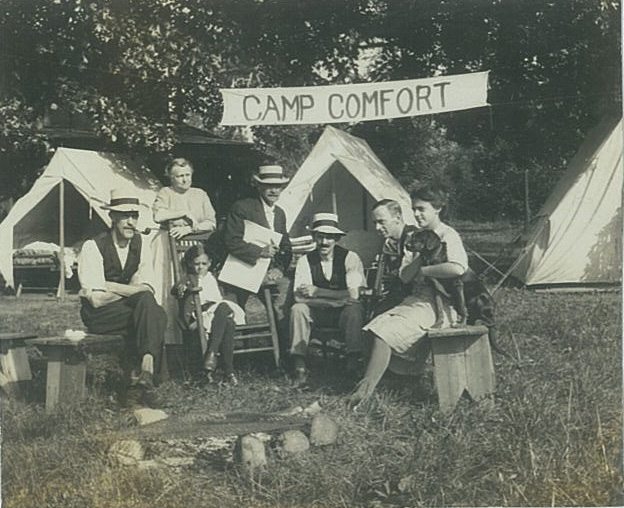Bulls Island

Called Ponnacussing by the native people in the pre-colonial period, this parcel of land surrounded by the D&R Canal on the east and the Delaware River on the west is known today as the Bulls Island Recreation Area. This island was included in a 625-acre tract of land that was granted to Richard Bull and John Ladd by the proprietors of West Jersey in 1712. Starting in the colonial period, the Island came to be called Bulls Island (sometimes spelled “Bools”). Prior to the construction of the Delaware and Raritan Canal in the 1830s, the Island was separated from the main land by a natural waterway aptly named Bulls Creek. This creek was dug out, dredged and enlarged to become the start of the canal’s feeder in the early 1830s.
The Island property went through a series of owners throughout the 17th century and into the 20th. Early owners of the Island included Isaiah Quimbey (who also acquired the lot where the Saxtonville Tavern now stands). Some fledgling enterprises were established here in the 18th century including a profitable shad fishery on the northern section of the Island. According to Marfy Goodspeed, who has done extensive research on Raven Rock and Delaware Township, a 10-acre mill lot, powered by the waters of Bulls Creek, was also in operation by the end of the 18th century. She identified the owners as Mahlon Cooper and Robert Curry. It is unclear whether Cooper and Curry built the mill site or acquired it from a previous owner. What is clear is that the business went through a series of owners in the early 19th century until it was finally acquired in 1835 by the D&R Canal Company who was purchasing property on Bulls Island for the purposes of building the canal’s feeder.
Another early recorded property owner was Nathaniel Saxton who began purchasing lots - eventually including the Cooper and Curry mill property - in 1808. Saxton, a land surveyor, lawyer, legislator and entrepreneur seemed to be a bit of a self-promoter as well. Although his time in and around Bulls Island was relatively brief (about 20 years), his influence on Raven Rock was considerable. Evidence of that is found a mere three years later on an 1811 map that refers to the area as Saxtonville and road returns of the same year make reference to “Saxton’s Mills.” Goodspeed speculates that applying the moniker of “Saxtonville” and “Saxton’s Mills” to the location might have been in an effort to draw business to his newly acquired mill and this sparsely populated community north of Center Bridge (now Stockton). Clearly, Nathaniel Saxton had an interest in the location as he purchased additional properties and extended his holdings around Bulls Island. The historic building located along Route 29 just north of Bulls Island still bears the name “Saxtonville Tavern” from Nathaniel’s period of ownership (1810 – 1836). In an effort to expand his business holdings in the area (which included “Saxton’s Ferry in addition to the mills), he extended the building and operated a tavern out of the old Quimbey homestead. It is not clear whether or not Saxton ran the tavern or the mills or even resided long-term in Saxtonville as his primary place of residence seems to have been Flemington.

Change was coming to the Island community. In the 1830s Bulls Island was established as the starting point of the Delaware and Raritan Canal’s feeder. A wing dam would be constructed at the northern tip of the island to efficiently direct water into the canal's feeder. As mentioned above, the Delaware and Raritan Canal Company began the process of purchasing the property it needed to construct the 66-mile waterway including holdings on Bulls Island. In 1831 a sizable parcel was purchased from James Cox where the guard lock is now located. The mill lot (then owned by James Coryell) was added in 1835 and still others in 1847. In 1852 lots on the eastern bank of the feeder were purchased by the Belvidere and Delaware Railroad.
By the end of the 19th century much of the land was maintained by the Pennsylvania Railroad Company who since 1871 held a 999-year lease on all Canal Company property. In the 1890s the upper half of the Island was used by railroad employees and locals for picnics and was called Ellmaker’s Island. In fact, with the exception of several river front parcels which remained in private hands, much of the Island was owned by the railroad and likely used as a summer get-away by some employees. According to Edward Irons, grandson of the Ernest and Nellie Fogleman the last private owner of the river front parcels, several homes and summer cabins stood in the day use area one of which, “The Oaks,” was likely built in the early 20th century. It is speculated that this house may have been built and owned by the railroad and used by its employees before being sold into private hands (presumable to Frank Withington and then Edward Hack).
By the mid-twentieth century parcels along the pedestrian bridge road (a road bridge was first established between Raven Rock and Lumberville in 1856), the day use and campground areas were in private hands. Although the full deed chronology of the Island property is still to be completed and properly documented, evidence suggests that the Pennsylvania Railroad decided to sell off its Island holdings as the century progressed. Some of the family names associated with those first purchases in the 1920s and 30s are Carter, Withington, and Heath. All three were long-time employees of the railroad and lived in the greater Philadelphia area. Later owners included Stem, Robbins, Herholz, Hack and Tusche. A private campground on the northern section was established and maintained on the Island by the 1960s. The state began the process of purchasing the privately held lots, including the campground in the 1960s for the purposes of creating the Bulls Island Recreation Area and Campground. The newly created recreation area and campground facilities would eventually come under the management of D&R Canal State Park which was established in 1974.




